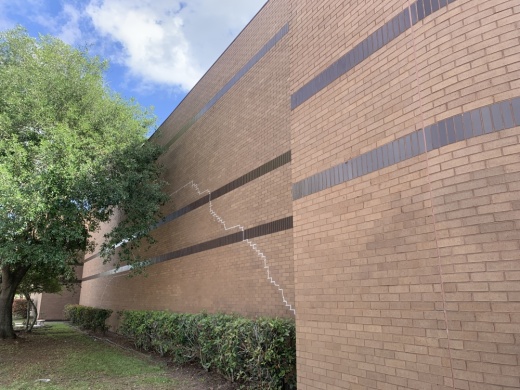Five years have passed since the district’s last bond in 2018, which directed $992.6 million to similar construction, renovation and technology needs. This would be the largest bond in the district’s history.
“A lot has happened, and now it’s time,” FBISD Superintendent Christie Whitbeck said at a March 8 Fort Bend Chamber of Commerce luncheon. “Some things have kind of gotten kicked down the road and need to be addressed.”
Among other construction, transportation and security projects, the bond addresses maintenance issues across the district’s facilities, including roofing; flooring; and heating, ventilation and air conditioning. FBISD’s board of trustees voted to call an election for the $1.26 billion bond during a Feb. 16 special meeting.
“We believe confidently that this bond will pass at a high rating,” FBISD board President Kristen Davison Malone said. “Our administrative team has done their homework, as have we, to really propel it forward.”
Breaking down the bond
The bond will be split into three different propositions on the ballot due to laws that require the district to separate options for computer upgrades as well as athletic facilities.
The $1.18 billion Proposition A encompasses construction, security, transportation and technology upgrades. Of that sum, $463 million is set aside for major projects, including facility rebuilds, a new elementary school and a new middle school.
The district expects to enroll nearly 85,000 students by 2027-28, up from its 2022-23 enrollment of more than 80,000 students, according to a spring 2023 demographic report from Population and Survey Analysts. This 6.25% growth is slightly more than the 5.79% increase the district has seen the last five years.
To accommodate this anticipated growth, FBISD would add a new middle school in the southeast portion of the district near the Sienna development and another elementary school near the 1,300-acre Harvest Green development in Richmond.
Additionally, to address a projected 380% resident student increase over the capacity of Heritage Rose Elementary School, the district would convert the Ferndell Henry Center for Learning in Rosharon to an elementary school. Current students would be relocated to another district building.
“We’re asking for what we need,” FBISD Deputy Superintendent Steven Bassett said at the luncheon. “We’ve scrubbed this and scrubbed it, and our board has asked us a lot of hard questions—good questions. They’ve done their due diligence.”
Nearly half of the bond—$591 million—is allocated to address facility deficiencies and life cycle needs, including improvements to roofs, air conditioning, flooring and windows.
“We also have to take care of these schools that are older to keep them up to the level that we want for all children,” Superintendent Whitbeck said.
Proposition B would cover nearly $52.5 million for computer upgrades districtwide, and the $22.9 million Proposition C would fund a new district natatorium in the southeast portion of the district. FBISD has one natatorium and a practice swimming facility, located in the north and central parts of the district.
Fixing aging facilities
Addressing its aging facilities is a significant goal of FBISD for this bond, Whitbeck said, as the district’s average facility age is 45 years old.
The bond’s most financially significant project, a nearly $223 million rebuild of 40-year-old Clements High School, would address these kinds of needs. The school has the worst Facility Condition Index rating—a benchmark used by the district to evaluate a building’s repair needs—of all the district’s facilities, according to Carolina Fuzetti, FBISD’s executive director of design and construction. This is primarily due to foundation issues causing cracks in the walls and floors. It also lacks a fire sprinkler system, windows in classrooms, a cafeteria that fits all students and a voice evacuation system for emergencies.
“It’s a real challenge to go into an old building and upgrade as best you can, and the end result is you have an old building that has been upgraded,” PBK Architects partner Ron Bailey said during a March 22 public tour of the school.
The new building would use a structural slab, designed to allow soil to move without the slab cracking, Bailey said. It would hold up to 3,000 students, an increase from the current building’s 2,639 design capacity. The $113 million price tag to rehabilitate the existing building is over half of the $223 million cost to rebuild.
“This is really when you start evaluating all the components that are wrong, that are failing or not up to code, and compare that cost with a rebuild and make a decision if it is worth continuing to invest and infuse money into this building,” Fuzetti said.
The district would build the new building on the athletic fields, relocate students to the new building by 2027, then rebuild the fields where the current building sits. While construction is underway, students would use Mercer Stadium or other facilities in the district.
Over $94.5 million would also be used to rebuild 46-year-old Briargate Elementary and 42-year-old Mission Bend Elementary schools. Briargate will consolidate with Blue Ridge, and Mission Bend will consolidate with Mission Glen for the 2023-24 school year, regardless of bond passage, due to low enrollment. Construction would be finished in two years.
Funding the bond
The district has to call a bond to cover the cost of these types of projects because of how its financial system operates, Bassett said.
Revenue from property tax can be used for the district’s maintenance and operations expenses, such as utilities, fuel and employee salaries. Revenue from a bond, on the other hand, funds the budget for projects such as construction, renovations and other facility upgrades. State funding cannot be used for new construction and renovation, Bassett said.
“We must have a bond in order to build buildings, in order to make a difference in terms of structures,” Whitbeck said.
The district’s 2022-23 tax rate is $1.13 per $100 property valuation. If the bond passes, the district projects the tax rate would increase to $1.14 per $100 property valuation for the 2023-24 tax year. Residents with a $300,000 home would see a $30 increase to their annual tax bill, Bassett said.
Rachelle Kanak, executive vice president of marketing and operations for the Fort Bend County Economic Development Council, emphasized the importance of having high-quality schools in keeping property values high.
“Schools are magnets, and good schools attract,” Kanak said at the March 8 luncheon. “Fort Bend County has attracted businesses and people because of education. They’re a big part of this success story.”
Residents will have the chance to decide on this during the bond election, which will be held during the May 6 election.
“We have a lot of work to do in Fort Bend ISD. This bond is one piece of that, but more than anything, it’s trying to meet the needs of each and every child,” Whitbeck said at the luncheon.





